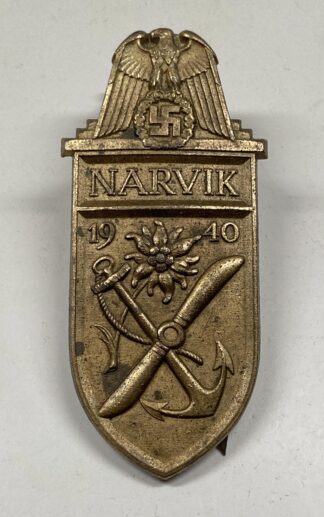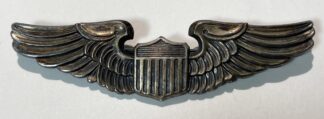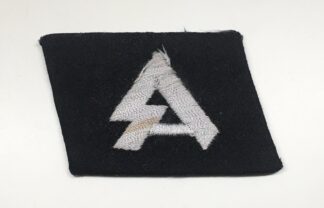Description
This A-2 flight jacket set is nothing short of amazing, I originally purchased this set just for the fact it was a nice A-2 jacket, after doing some research I realized who it actually belonged to…
2nd Lieutenant Kenneth L. Vaughn was born April 27th, 1922 in Lisbon, Ohio. After graduating high school in 1940, he would sign up for the United States Army, becoming an Officer in the 8th Air Force. He was a decorated WWII combat veteran earning an Air Medal and Purple Heart as a B-17 co-pilot flying out of Polebrook, England apart of the 351st Bomb Group, 511th Bomb Squadron “Ball Boys.” During his 9th mission on Dec 31st, 1943 his plane “Speedball”#42-29877 was shot down on an air raid into Bordeaux, France. Of the 10-man crew aboard the B-17, only 2 survived…1 was killed by intense anti-aircraft fire during the raid, and 7 froze to death after ‘ditching’ in the English Channel. He and the other surviving crew member washed ashore on Guernsey Island New Year’s Day 1944, and were captured by the Germans. Within days he was transported to Stalag Luft 1 in Barth, Germany. After a week in solitary confinement, he spent the next 1 1/2 years (until the end of the war) as a Prisoner of War. The entire disaster was told in great detail by 2nd Lt. Vaughn after his liberation…
“Lt. Albert Jones, flying 42-29877, ‘Speed Ball”, had escaped damage by flak and left the target area with the main force. German fighters attacked the formation as it flew back over the Brest Peninsula and some persisted in these actions to within 30 miles of the English coast. During these attacks, 42-29877 was hit. One engine was put out of action, another suffered a serious loss of power and Sgt. Bittner, the tail gunner, was severely wounded.” “Lt. Jones was forced to ditch his crippled ship at approximately 1430 hours some 12 miles north of Guernsey; the nine surviving crewmembers taking to the life rafts. Lt. Charles Bronako, the bombardier, recalled a British fighter circling their ditched aircraft shortly before she sank beneath the waves and spirits rose in the belief that rescue would soon arrive. Sadly this was not to be and as the short winter daylight drew to a close, the crew, in their now saturated clothing, huddled together for warmth against the bitter cold of the winter’s night.” “Throughout the night of December 31, 1943 and into the morning hours of January 1, 1944 the nine survivors of Speed Ball’s crew struggled against the elements in an open life raft on the bitterly cold sea. Sometime between 2200 hours and midnight Lt. Dearborn, the navigator, succumbed to exposure; his body being committed to the deep, with all the dignity possible under the circumstances, by his fellow airmen. During this time, the tide turned and by the early hours of the morning the life rafts were being carried towards the northwest coast of Guernsey, close in fact to where Lt. Willis Smith and his crew had landed some hours previously. The life rafts grounded on an exposed reef, said to have been the Saut Rocher, and the drenched airmen thankfully climbed upon the rocks and tried to alert the attention of the Germans by firing flares at half-hourly intervals. Little seems to have been done to effect the rescue of the stranded men by the occupying force who could not have failed to see the flares.” By 0630 hours the rapidly rising tide began washing over the reef. Sgt. Carl Bekken, the ball turret gunner, who had taken off his life vest to use as a pillow on the rocks, was swept away at 0650 hours, followed shortly afterwards by the rest of the men. Now, weakened by exposure, they became the playthings of the waves. Only Lt. Kenneth Vaughn and Lt. Charles Bronako survived to be washed ashore by the surf where they were found by German soldiers. Following treatment they were taken to the “Happy Landings Hotel.” Kenneth L. Vaughn in 2014 he said that after recuperating from their ordeal in the Channel, Bronako and he were taken by train to Paris on their way to a German POW Camp. As the train approached the outskirts of Paris, Bronako jumped off the train and escaped. He was free for about three months before he was betrayed, recaptured and sent to a POW camp.
This is an absolutely incredible A-2 jacket, inside the pockets was a newspaper clipping talking about 2nd Lt. Vaughn and his heroic service, as well as a 1940 dated map. The jacket has his originally sewn leather name tag, as well as the squadron patches for the 351st Bomb Group, and the 511th Bomb Squadron. The left sleeve shows the painted USAAF emblem, and the shoulders show his painted 2nd Lieutenant ranks. On the reverse shows the faded image of a white ball, inside the ball it can be made out the word “Speed Ball” for his plane. Truly an incredible piece of U.S WWII history!
After the war the majority of his military career, he was a pioneer integrating computers into military operations; installing the first computer into the Pentagon Operations Center in the early 1960s, and later served as the first Director of Data Automation for HQ Military Airlift Command at Scott AFB, IL. He was a life member of the 351st Bomb Group Association, and the American ex-POW Okaw Valley Chapter. He would live till the prime old age of 95 years old, passing away on May 3rd, 2017 at his home with his loving family by his side. The definition of a true American Hero.






























